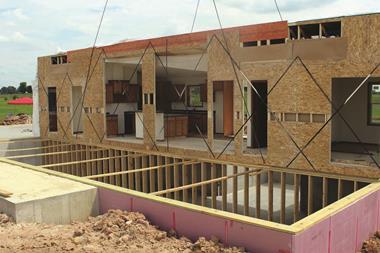Bringing our week of showcasing women from across the industry’s voices to a close, Allsop partner Lesley Roberts writes about the need for more diversity within the build-to-rent sector.

What has become evident over the 10-year history of BTR in the UK is that it has the potential to appeal to a wide range of people across all age groups and occupations. To anticipate consumers’ needs and continue developing relevant products that help make lives easier and more comfortable, we need a diversity of perspectives in BTR. This will help ensure that this sector, endowed with an enormous potential, caters to all – from individuals to sharers, couples, single parents, retirees and large families, creating cohesive and thriving communities.
In the early days, BTR was broadly thought of as high-density units, let and managed under one roof, set in an urban environment that would mostly appeal to the younger generation of working professionals. For many, such homes were seen as a steppingstone towards the property ladder, providing an element of shared amenity and convenience on tap. The consideration for suburban BTR was limited, as the investment returns and proof points were few and far between.
While urban BTR properties have, in the majority, attracted a younger audience, the concept itself was of interest to a much wider pool of tenants than anticipated. Just like home ownership, renting has a number of advantages, providing mobility and often allowing people to enjoy a lifestyle they could not otherwise afford.
Over the past 10 years, the sector has come a long way, and we’re now seeing more family-focused BTR developments springing up across the country – Goldman Sachs’ recent £150m milestone purchase of the Gatehouse Portfolio signalled the depth of appetite in the market for investment into regional residential assets. Legal & General’s launch of a dedicated Single Family Housing business using its own funds is another example of the strength of sentiment for investment into regional family housing.
The case for regional residential investment had been bubbling along even prior to the pandemic. Today, the housing crisis and desire for good-quality rental accommodation at a reasonable value point continue to be the driving forces behind the uptake of BTR homes. However, since the onset of the health crisis, there has been a sharper focus on outdoor space, community elements, facilities and services, build quality and value for money.
Despite the positive trends on the demand-side, we need to say alert. The best way to keep abreast of consumer preferences is by constantly sharing insight and learning, ensuring our sector is representative of the people it is catering to. Without diversity of thought and perspective within it, BTR will start to lag behind and ultimately fail.
We need to focus on bringing in more voices that would help developers and their partners to create the right kinds of homes and facilities, challenging the common perception of BTR being all about apartments in high-rise blocks for millennial professionals. As humans, we all yearn for security and comfort, which we look to find in a home, but these things mean different things to different people, so there can be no cookie-cutter approach.
Diversity of thought and varied input from life experiences bring colour and perspective to the development, investment and management of BTR. The more we understand the variety of people we provide homes for and their living preferences, the better we can be at creating and delivering spaces that represent much more than just a roof over our heads.
Lesley Roberts is a partner at Allsop
































No comments yet